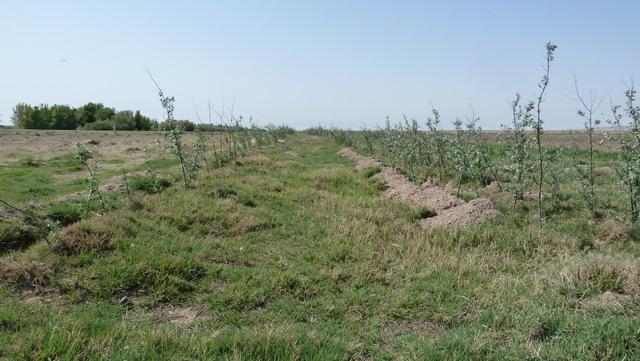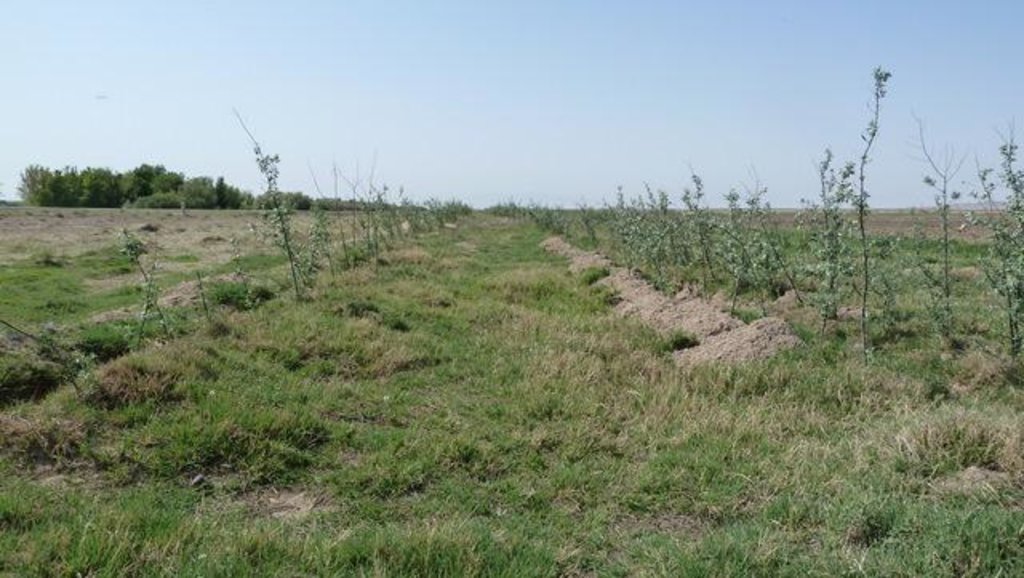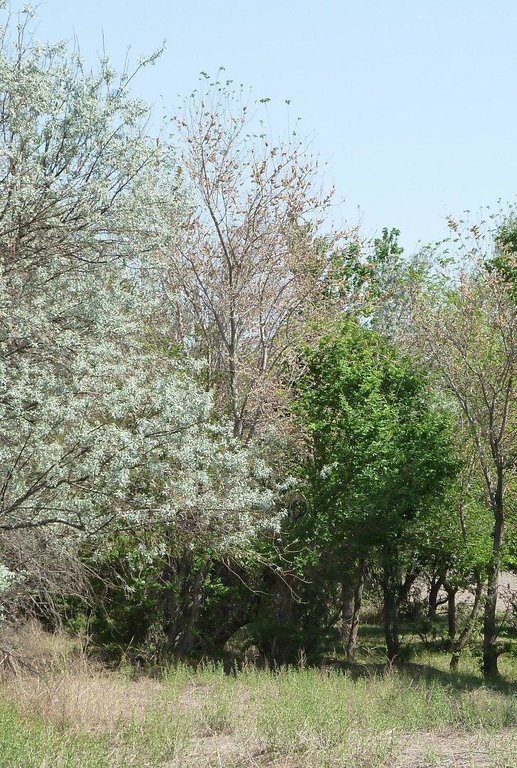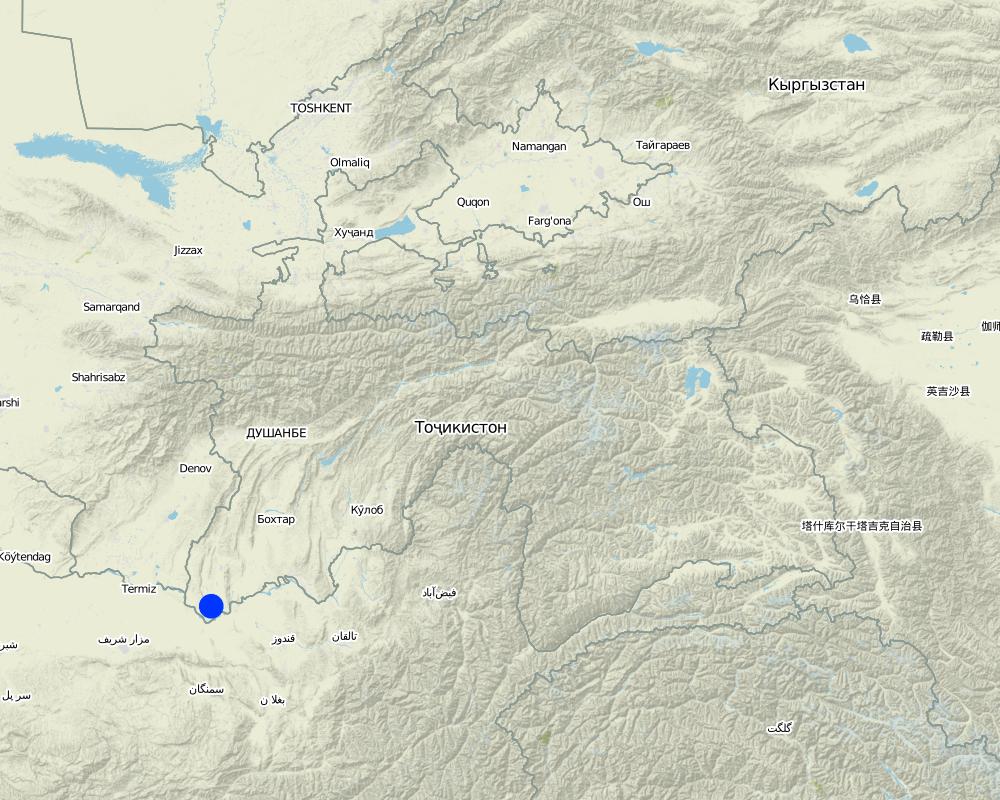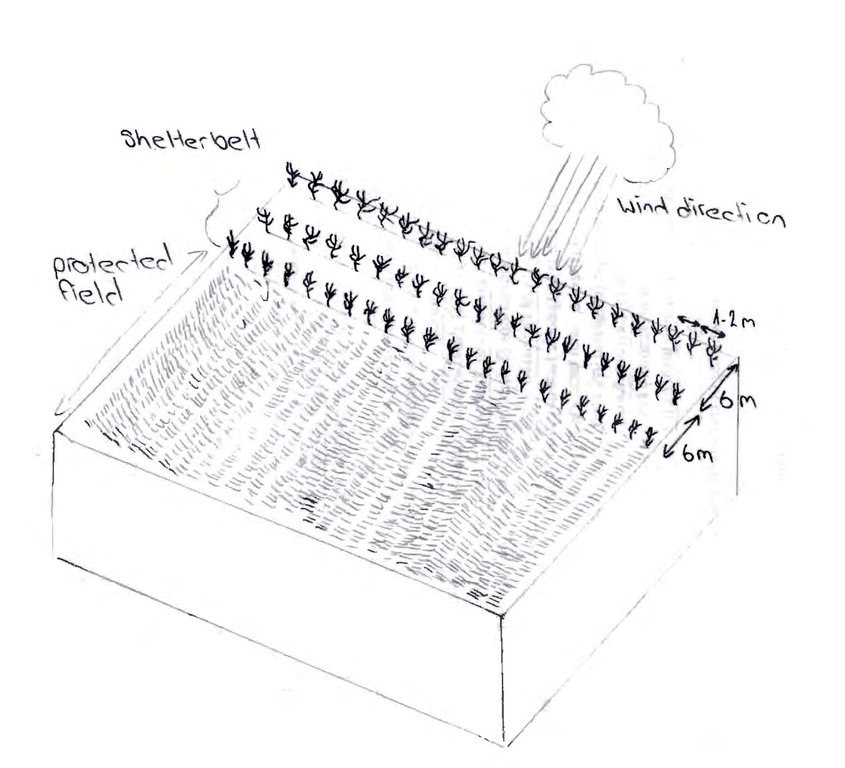Shelterbelts with Russian Silverberry for the protection of irrigated fields [طاجيكستان]
- تاريخ الإنشاء:
- تحديث:
- جامع المعلومات: Firdavs Faizulloev
- المحرر: –
- المراجعون: Deborah Niggli, Alexandra Gavilano
Tajikistan - Central Asian Countries Initiative for Land Management (CACILM/ИСЦАУЗР)
technologies_1458 - طاجيكستان
- Shelterbelts with Russian Silverberry for the protection of irrigated fields: 4 يناير، 2017 (inactive)
- Shelterbelts with Russian Silverberry for the protection of irrigated fields: 20 يوليو، 2017 (inactive)
- Shelterbelts with Russian Silverberry for the protection of irrigated fields: 21 أغسطس، 2019 (inactive)
- Shelterbelts with Russian Silverberry for the protection of irrigated fields: 2 نوفمبر، 2021 (public)
عرض الأقسام
توسيع الكل طي الكل1. معلومات عامة
1.2 تفاصيل الاتصال بالأشخاص الرئيسيين لمصدر المعلومات والمؤسسات المشاركة في تقييم وتوثيق التقنية
متخصص في الإدارة المستدامة للأراضي:
متخصص في الإدارة المستدامة للأراضي:
Ibragimov Firuz
National Capacity Building Coordinator, Energy and Environment Programme, UNDP Tajikistan
طاجيكستان
اسم المشروع الذي سهّل توثيق/تقييم التقنية (إذا كان ذلك على صلة)
Central Asian Countries Initiative for Land Management (CACILM I)اسم المشروع الذي سهّل توثيق/تقييم التقنية (إذا كان ذلك على صلة)
Pilot Program for Climate Resilience, Tajikistan (WB / PPCR)1.3 الشروط المتعلقة باستخدام البيانات الموثقة من خلال WOCAT
يوافق جامع المعلومات والشخص (لاشخاص) الرئيسي لمصدر المعلومات على الشروط المتعلقة باستخدام البيانات الموثقة من خلال WOCAT:
نعم
1.4 إعلان بشأن استدامة التقنية الموصوفة
هل التقنية الموصوفة هنا تمثل مشكلة فيما يتعلق بتدهور الأراضي، بحيث لا يمكن إعلانها تقنية مستدامة لإدارة الأراضي؟:
كلا
2. وصف تقنيةالإدارة المستدامي للأراضي
2.1 وصف مختصر للتقنية
تعريف التقنية:
Shelterbelts are used to protect irrigated land from deposition of sand and to reduce wind speed
2.2 وصف تفصيلي للتقنية
الوصف:
This technology consists of shelterbelts made of Russian Silverberry (Elaeagnus angustifolia) to protect irrigated wheat and rice fields from strong winds.
In the Shaartuz area wind erosion poses huge problems to crop cultivation as topsoil is being removed and deposited as sediments on neighbouring fields. Dusty storms not only damage the crops but they also cause damage to the main surface, the fertile layer of soil. Sand also damages the irrigation canals, roads, gardens and streets in urban areas which forces people to leave such areas. Good yields cannot be achieved if fields are not properly protected.
A solution to this problem is the planting of shelterbelts around fields to slow wind speed and to prevent erosion of the arable soil layer. During Soviet times shelterbelts were planted on collective farms by the state forestry committee under contracts. After the collapse of the USSR and before the formation of Dehkan farms land users were not interested in investing in shelterbelts due to unprotected land use rights and unclear legal procedures. One farmer however tested the planting of a shelterbelt in 1992 when his son came back from his studies at the Agricultural University where he had learnt about the technology. They planted the first shelterbelt using a mixture of different tree species to protect newly irrigated fields. Due to financial constraints they could not invest in any other shelterbelts but in 2010 UNDP provided them with financial support to buy seedlings to increase the shelterbelt area. For this new shelterbelt the native Russian Silverberry (Elaeagnus angustifolia) was considered the most appropriate species as soils were highly saline and only this species proved tolerant.
Trees were planted in three rows, along field boundaries and also along irrigation channels. Within rows trees were spaced at a 1m interval with a 6 m distance between rows. The plantations were established through “haschar” (voluntary neighbourhood help) with 30 people planting about 10,000 trees within one month. During the first three years after planting the saplings need regular irrigation and sanitary cleaning to help establish themselves. After 6-7 years the trees start drawing a lot of water from the soil which prevents the irrigated soils from damage through water logging. Russian silverberry can grow up to 12 m in 10-12 years.
Benefits of these shelterbelts are increased crop yields (wheat and rice) due to the protection from strong winds and decreased evapotranspiration. Thanks to the species association with nitrogen fixing root bacteria soil fertility is improved. The trees further produce edible fruits and provide valuable firewood that is consumed by the households. Russian Silverberry is resistant to pests and diseases and drought-tolerant once established; however, it requires a lot of water during the first few years. One constraint to the establishment of the shelterbelt is local people who often cut down branches for firewood. The farmer therefore has to guard his field whenever possible with the help of his family and staff he has employed to work on his field. Implementation of forestry initiatives began in 2009 and a total of 11 ha land was covered between 2009-2010. 11 farmers were involved in the project and establishment of the shelterbelts was initiated stage by stage during these two years. The project initiatives have also continued into 2011 as well. As other farmers do observe and understand the importance of shelterbelts, there has been a trend towards adoption of the technology by other farmers.
2.3 صور التقنية
2.5 البلد/المنطقة/المواقع التي تم تنفيذ التقنية فيها والتي يغطيها هذا التقييم
البلد:
طاجيكستان
المنطقة/الولاية/المحافظة:
Khatlon
مزيد من التفاصيل حول الموقع:
Shaartuz
حدد انتشار التقنية:
- منتشرة بالتساوي على مساحة
إذا كانت المساحة الدقيقة غير معروفة، فيرجى الإشارة إلى المنطقة التقريبية المغطاة:
- < 0.1 كم2 (10 هكتار)
التعليقات:
Total area covered by the SLM Technology is 0.09 km2.
The technology has been applied by 11 different farmers on 9 ha of land
Map
×2.6 تاريخ التنفيذ
في حالة عدم معرفة السنة بالتحديد، يرجى الإشارة إلى التاريخ التقريبي:
- منذ 10-50 سنة
2.7 إدخال التقنية
حدد كيف تم إدخال التقنية:
- أثناء التجارب/الأبحاث
التعليقات (نوع المشروع، الخ):
The land users son learnt about the technology while he studied at the agricultural university and the first shelterbelt was implemented through the land users own initiative
3. تصنيف تقنية الإدارة المستدامي للأراضي
3.1 الغرض الرئيسي ( الأغراض الرئيسية) للتقنية
- تحسين الإنتاج
- الحفاظ على النظام البيئي
3.2 نوع (أنواع) استخدام الأراضي الحالية حيث يتم تطبيق التقنية

الأراضي الزراعية
- زراعة سنوية
- زراعة معمرة (غير خشبية)
الزراعة السنوية - حدد المحاصيل:
- الحبوب - قمح (ربيعي)
- الحبوب - الأرز (في الأراضي المرتفعة)
الزراعات المعمرة (غير الخشبية) - حدد المحاصيل:
- التوت
- Silverberry (Elaeagnus angustifolia)
عدد مواسم الزراعة في السنة:
- 1
التعليقات:
Major land use problems (compiler’s opinion): Dusty storms not only damage the crops but they also cause damage to the main surface, the fertile layer of soil. Sand also damages the irrigation canals, roads, gardens, streets in urban areas which can force people to leave such areas.
Major land use problems (land users’ perception): Wind erosion leading to deflation of sandy soils, low soil fertility, reduction of vegetation cover, and increasing impacts of climate change.
3.3 هل تغير استخدام الأراضي نتيجة لتنفيذ التقنية؟

أرض غير منتجة
حدد:
wastelands, deserts, glaciers, swamps, recreation areas, etc
3.4 إمدادات المياه
إمدادات المياه للأرض التي يتم تنفيذ التقنية عليها:
- ري كامل
3.5 مجموعةالإدارة المستدامة للأراضي التي تنتمي إليها هذه التقنية
- مصد الريح/حزام حماية
3.6 التدابير التقنية في مجال إلادارة المستدامة للأراضي

التدابير النباتية
- V1: غطاء من الأشجار والشجيرات
التعليقات:
Type of vegetative measures: aligned: -against wind
3.7 الأنواع الرئيسية من تدهور الأراضي التي تناولتها التقنية

تآكل التربة الناتج عن الرياح
- (Et): فقدان التربة السطحية
- (Ed): الانكماش والترسب
- (Eo): تأثيرات التدهور من مواقع أخرى

التدهور البيولوجي
- (Bh): فقدان الموائل
- (Bq): انخفاض الكمية/الكتلة الحيوية

تدهور المياه
- (Ha): التجفيف
التعليقات:
Main causes of degradation: over-exploitation of vegetation for domestic use, wind storms / dust storms, inputs and infrastructure: (roads, markets, distribution of water points, other, …) (breakdown of soviet irrigation systems and therefore abandonment of land)
3.8 منع أو حد أو عكس تدهور الأراضي
تحديد هدف التقنية فيما يتعلق بتدهور الأراضي:
- الحد من تدهور الأراضي
- اصلاح/إعادة تأهيل الأراضي المتدهورة بشدة
4. المواصفات الفنية، وأنشطة التنفيذ، والمدخلات، والتكاليف
4.1 الرسم الفني للتقنية
المواصفات الفنية (المتعلقة بالرسم الفني):
Shelterbelts consist of three rows of trees (Russian Silverberry). The rows are spaced 6 meters apart from each other and the interval between trees within the rows is 1-2 m.
Location: Shaartuz. Khatlon
Date: 27.05.2011
Technical knowledge required for field staff / advisors: low
Technical knowledge required for land users: low
Main technical functions: stabilisation of soil (eg by tree roots against land slides), reduction in wind speed
Secondary technical functions: increase of biomass (quantity)
Aligned: -against wind
Vegetative material: T : trees / shrubs
Number of plants per (ha): 1500
Spacing between rows / strips / blocks (m): 6
Vertical interval within rows / strips / blocks (m): 1-2
Trees/ shrubs species: Elaeagnus angustifolius (planted)
المؤلف:
Julie Zaehringer, Baumackerstr. 51, 8050 Zuerich
4.2 معلومات عامة بخصوص حساب المدخلات والتكاليف
عملة أخرى/ عملة وطنية (حدد):
Somoni
إذا كان ذا صلة، وضح سعر الصرف من الدولار الأمريكي إلى العملة المحلية (على سبيل المثال، 1 دولار أمريكي = 79.9 ريال برازيلي): 1 دولار أمريكي =:
4,5
اذكر متوسط تكلفة أجر العمالة المستأجرة في اليوم الواحد:
5.50
4.3 أنشطة التأسيس
| النشاط | التوقيت (الموسم) | |
|---|---|---|
| 1. | Planting of grafting material or tree seedlings | December |
4.4 التكاليف والمدخلات اللازمة للتأسيس
| تحديد المدخلات | الوحدة | الكمية | التكاليف لكل وحدة | إجمالي التكاليف لكل مدخل | % من التكاليف التي يتحملها مستخدمو الأراضي | |
|---|---|---|---|---|---|---|
| العمالة | labour | ha | 1,0 | 720,0 | 720,0 | 100,0 |
| المواد النباتية | seedlings | ha | 1,0 | 1350,0 | 1350,0 | |
| إجمالي تكاليف إنشاء التقنية | 2070,0 | |||||
| إجمالي تكاليف إنشاء التقنية بالدولار الأمريكي | 460,0 | |||||
التعليقات:
Duration of establishment phase: 12 month(s)
4.5 الصيانة/الأنشطة المتكررة
| النشاط | التوقيت/الوتيرة | |
|---|---|---|
| 1. | Irrigation of seedlings | regularly during first three years |
| 2. | Sanitary cleaning of trees |
4.6 التكاليف والمدخلات اللازمة للصيانة/للأنشطة المتكررة (سنويًا)
| تحديد المدخلات | الوحدة | الكمية | التكاليف لكل وحدة | إجمالي التكاليف لكل مدخل | % من التكاليف التي يتحملها مستخدمو الأراضي | |
|---|---|---|---|---|---|---|
| العمالة | labour | ha | 1,0 | 85,0 | 85,0 | 100,0 |
| إجمالي تكاليف صيانة التقنية | 85,0 | |||||
| إجمالي تكاليف صيانة التقنية بالدولار الأمريكي | 18,89 | |||||
4.7 أهم العوامل المؤثرة على التكاليف
قدم وصفا لأهم العوامل التي تؤثر على التكاليف:
Labour was provided for free through the so-called "haschar" or neighborhood help.
5. البيئة الطبيعية والبشرية
5.1 المناخ
هطول الأمطار السنوي
- < 250 مم
- 251- 500 ملم
- 501 - 750ملم
- 1,000-751 ملم
- 1,500-1,100 ملم
- 2,000-1,500 ملم
- 3,000-2,001 ملم
- 4,000-3,100 ملم
- > 4000 ملم
المنطقة المناخية الزراعية
- قاحلة
Thermal climate class: temperate
5.2 طوبوغرافيا
متوسط الانحدارات:
- مسطح (0-2%)
- بسيط (3-5%)
- معتدل (6-10%)
- متدحرج (11-15%)
- تلال (16-30%)
- شديدة الانحدار(31-60%)
- فائقة الانحدار (>60%)
التضاريس:
- هضاب/سهول
- أثلام مرتفعة
- المنحدرات الجبلية
- منحدرات التلال
- منحدرات في السفوح
- قاع الوادي
المنطقة الارتفاعية:
- 100-0 متر فوق سطح البحر
- 500-101 متر فوق سطح البحر
- 1,000-501 متر فوق سطح البحر
- 1,500-1,001 متر فوق سطح البحر
- 2,000-1,501 متر فوق سطح البحر
- 2,500-2,100 متر فوق سطح البحر
- 3,000-2,501 متر فوق سطح البحر
- 4,000-3,001 متر فوق سطح البحر
- > 4000 متر فوق سطح البحر
5.3 التربة
متوسط عمق التربة:
- ضحل جدًا (0-20 سم)
- ضحلة (21-50 سم)
- متوسطة العمق (51-80 سم)
- عميقة (81-120 سم)
- عميقة جدًا (> 120 سم)
قوام التربة (التربة السطحية):
- خشن / خفيف (رملي)
المواد العضوية في التربة السطحية:
- منخفضة (<1%)
5.4 توافر المياه ونوعيتها
منسوب المياه الجوفية:
< 5 م
توافر المياه السطحية:
ضعيف/ غير متوافر
نوعية المياه (غير المعالجة):
مياه الشرب سيئة (تتطلب معالجة)
5.5 التنوع البيولوجي
تنوع الأنواع:
- منخفض
5.6 خصائص مستخدمي الأراضي الذين يطبقون التقنية
التوجه السوقي لنظام الإنتاج:
- مختلط (كفاف/ تجاري)
الدخل من خارج المزرعة:
- 10-50% من جميع الإيرادات
أفراداً أو مجموعات:
- فرد/أسرة معيشية
مستوى المكننة:
- عمل يدوي
- ميكانيكية/ مزودة بمحرك
اذكر الخصائص الأخرى ذات الصلة لمستخدمي الأراضي:
Land users applying the Technology are mainly common / average land users
Annual population growth: 1% - 2%
5.7 متوسط مساحة الأرض التي يستخدمها مستخدمو الأراضي الذين يطبقون التقنية
- < 0.5 هكتارا
- 0.5 - 1 هكتار
- 1 -2 هكتار
- 2 - 5 هكتار
- 5 - 15 هكتار
- 15 - 50 هكتار
- 50 - 100هكتار
- 500-100 هكتار
- 1,000-500 هكتار
- 10,000-1,000 هكتار
- > 10,000 هكتار
هل يعتبر هذا نطاقًا صغيرًا أو متوسطًا أو واسعا (في إشارة إلى السياق المحلي)؟:
- على نطاق متوسط
5.8 ملكية الأراضي، وحقوق استخدام الأراضي، وحقوق استخدام المياه
ملكية الارض:
- فردية، يوجد سند ملكية
حقوق استخدام الأراضي:
- فردي
5.9 الوصول إلى الخدمات والبنية التحتية
الصحة:
- ضعيف
- معتدل
- جيد
التعليم:
- ضعيف
- معتدل
- جيد
المساعدة التقنية:
- ضعيف
- معتدل
- جيد
العمل (على سبيل المثال خارج المزرعة):
- ضعيف
- معتدل
- جيد
الأسواق:
- ضعيف
- معتدل
- جيد
الطاقة:
- ضعيف
- معتدل
- جيد
الطرق والنقل:
- ضعيف
- معتدل
- جيد
مياه الشرب وخدمات الصرف الصحي:
- ضعيف
- معتدل
- جيد
الخدمات المالية:
- ضعيف
- معتدل
- جيد
6. الآثار والتصريحات الختامية
6.1 الآثار التي أظهرتها التقنية في الموقع
الآثار الاجتماعية والاقتصادية
الإنتاج
إنتاج المحاصيل
إنتاج الأعلاف
خطر فشل الإنتاج
الآثار الاجتماعية والثقافية
contribution to human well-being
التعليقات/ حدد:
through increased crop yield
الآثار الايكولوجية
دورة المياه / الجريان السطحي
التبخر
التربة
فقدان التربة
التعليقات/ حدد:
reduced deflation
التنوع البيولوجي: الغطاء النباتي، الحيوانات
تنوع الموائل
التعليقات/ حدد:
shelterbelts can provide habitat to birds, insects etc.
الحد من مخاطر المناخ والكوارث
سرعة الرياح
6.2 الآثار التي أظهرتها التقنية خارج الموقع
الرواسب المنقولة بواسطة الرياح
الأضرار التي لحقت بحقول الجيران
التعليقات/ حدد:
from prevention of deposition
6.3 تعرض التقنية وحساسيتها لتغير المناخ التدريجي والظواهر المتطرفة/الكوارث المرتبطة بالمناخ (كما يراها مستخدمو الأراضي)
تغير مناخ تدريجي
تغير مناخ تدريجي
| الموسم | زيادة أو نقصان | كيف تتعامل التقنية مع ذلك؟ | |
|---|---|---|---|
| درجة الحرارة السنوية | زيادة | جيدا |
الظواهر المتطرفة / الكوارث المرتبطة بالمناخ
الكوارث الجوية
| كيف تتعامل التقنية مع ذلك؟ | |
|---|---|
| عاصفة ممطرة محلية | جيدا |
| عاصفة هوائية محلية | جيدا |
الكوارث المناخية
| كيف تتعامل التقنية مع ذلك؟ | |
|---|---|
| جفاف | جيدا |
الكوارث الهيدرولوجية
| كيف تتعامل التقنية مع ذلك؟ | |
|---|---|
| فيضان عام (نهر) | غير معروف |
العواقب الأخرى المتعلقة بالمناخ
العواقب الأخرى المتعلقة بالمناخ
| كيف تتعامل التقنية مع ذلك؟ | |
|---|---|
| انخفاض فترة النمو | غير معروف |
6.4 تحليل التكلفة والعائد
كيف يمكن مقارنة العوائد نسبة لتكاليف الإنشاء (من وجهة نظر مستخدمي الأراضي)؟
عوائد قصيرة الأجل:
سلبي قليلا
عوائد طويلة الأجل:
إيجابي
كيف تتم مقارنة العوائدمع كلفة الصيانة/التكاليف المتكررة (من وجهة نظر مستخدمي الأراضي)؟
عوائد قصيرة الأجل:
محايد/متوازن
عوائد طويلة الأجل:
إيجابي
التعليقات:
the trees take time to establish during which the benefits are not yet tangible
6.5 اعتماد التقنية
- > 50%
التعليقات:
100% of land user families have adopted the Technology with external material support
11 land user families have adopted the Technology with external material support
There is a strong trend towards spontaneous adoption of the Technology
It is impossible to get good yield in these areas which are prone to strong winds without shelterbelts. Farmers do realise and understand the importance of shelterbelts and there is a trend towards growing spontaneous adoption of the technology.
6.7 نقاط القوة / المزايا / الفرص التي توفرها التقنية
| نقاط القوة/ المزايا/ الفرص من وجهة نظر مستخدمي الأراضي |
|---|
| Reduced deflation and deposition of sand on fields and therefore improved crop growth |
| Increased crop yield as before the establishment of shelterbelts no crops could grow on this land |
| Reduced wind speed |
| Russian Silverberry produces edible fruits rich in vitamins |
| Increased production area |
| نقاط القوة/ المزايا/ الفرص من وجهة نظر جامع المعلومات أو غيره من الاشخاص الرئيسيين لمصدر المعلومات |
|---|
| Russian silverberry is a native tree species with high drought-tolerance and the ability to grow on nutrient-poor soils thanks to its root association with nitrogen fixing bacteria |
| Once established the shelterbelts do not need a lot of maintenance |
| Rehabilitation of unproductive, denuded land into productive cropland |
6.8 نقاط ضعف / مساوىء / مخاطر التقنية وسبل التغلب عليها
| نقاط الضعف/ المساوىء/ المخاطر من وجهة نظر مستخدم الأراضي | كيف يمكن التغلب عليها؟ |
|---|---|
| The shelterbelts have to be protected from being damaged by local people who want to cut them for firewood | Awareness raising; increase of firewood supply through tree planting |
7. المراجع والروابط
7.1 طرق جمع/مصادر المعلومات
- زيارات ميدانية، مسوحات ميدانية
- مقابلات مع مستخدمي الأراضي
متى تم تجميع البيانات (ميدانيا)؟:
14/04/2011
الروابط والوحدات المواضيعية
توسيع الكل طي الكلالروابط
لا يوجد روابط
الوحدات المواضيعية
لا يوجد وحدات مواضيعية


